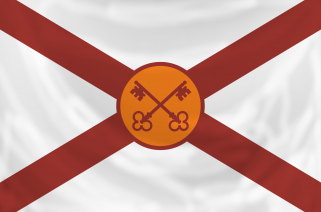14
Noronica | Nolon Underground


.
Government of the Prefectorial State of Nolon
Nolon Underground
.
Home | Mayor's Office | Underground |
 Weather |
Weather |  Have Your Say | Report Crime
Have Your Say | Report Crime.
The Nolon Underground, (known as the Underground or colloquially named the Belly) is a public rapid transit system serving the Prefectorial State of Greater Nolon and some parts of the adjacent Prefectorial State of Greater Inver in the Overlordship of Noronica.
The plan for the Nolon Underground was first conceived by the private company Imperial Railways in 1876. The City of Nolon, due to Noronica being a trade centre for the Western Isles and due to the Noronnican Empire, was growing exponentially, faster than the local authorities could catch up with. As the city expanded far beyond expectations, conventional modes of travel became much harder to use within the city, and therefore a new mode of transport was necessary. Conventional trains were much too large and dangerous for the open streets of Nolon City, and so an idea to build an underground metro system was sparked by Imperial Railways, who were contracted by the Noronnican Government to make this dream a reality. The Nolon Underground was then established in 1878 under a different name.
The initial two lines of the underground metro system, (now Central and Docklands lines) have now since expanded to eight lines spanning the Prefectorial State of Greater Nolon and some parts of Greater Inver. In 2017, the lines carried an approximate total of 824 million passengers and 2.3 million passengers a day.
Despite the assumptions, at least 35% of the system is overground due to the encompassing of surrounding towns and villages into the City of Nolon. At the heart of the city, however, there are only underground stations for the Nolon Underground system which gave Nolon Underground its nickname of 'Belly' as it is the underbelly of the city.
History
The Nolon Underground was first tested in the outskirts of the city of Gwynon, where the mixing of mining and locomotive techniques were experimented with to ensure efficient and safe underground travel. During an accident with the prototype system, Johnathan McHewert, a person involved in the testing of the system was killed, hindering plans to implement the system in the capital. When a much-improved prototype was constructed, Imperial Railways were given permission to initiate construction.

When Imperial Railways merged with other larger Noronnican transport companies that formed the Noronnican Souther Rails Company in 1923, the Nolon Underground was transferred under the new company's leadership, which extended the system into overground stations as well to accommodate the company's control of stations in Southern Noronica close to Nolon City.
When the Imperial War began, the Nolon Underground was brought under military oversight which would allow for the easy movement of troops and supplies, and it would provide shelter for the populace. On the occasion of an air raid, the Underground was used extensively, often housing residents of Nolon City overnight. All expansion plans were halted until after the war, as military oversight was stripped away from most Noronnican companies. Despite this freeing of constraints, under the National Transport Act of 1959, all Noronnican railway companies were nationalised including the Underground which was placed under the Greater Nolon Council.
The Nolon Underground saw more conflict usage in the Civil War. In 1981, the President of the then People's Republic of Noronica, Francesca Peyter, oversaw the extension and renaming of the Magaidh Line (named after the Noronnican Queen Magaidh) to 'Francesca' Line in an attempt to legitimise her cult of personality which she had cultivated in the capital. The Underground did see brief bouts of resistance sabotage and assassination attempts, grinding most movements to a halt in the final years of the Civil War.
In 2008, Nolon Underground was placed under the oversight of the newly created 'Nolon Transport Board' which now oversees all public transport in the Greater Nolon area. It expanded in eight lines in 2014 with the introduction of the Cross Line which opened up better connections within an outside Nolon City. In 2015, Nolon Underground Systems entered a deal with the  Vancouvia-based Northern Azure Railways which saw the purchasing of the new 6000 Series stock and the ongoing expansion of the Underground system.
Vancouvia-based Northern Azure Railways which saw the purchasing of the new 6000 Series stock and the ongoing expansion of the Underground system.
Infrastructure
Underground Map & Lines
 |
Line | Stations (Inc. Interchange) | Current Stock | |
◼ | Central | 15 | 5000 Series |
◼ | Overlord | 22 | 4000 Series |
◼ | Cross | 24 | 4000 Series |
◼ | Magaidh | 18 | 5000 Series |
◼ | Docklands | 28 | 5000 Series |
◼ | Touting & City | 30 | 3000 Series |
◼ | South | 17 | 3000 Series |
◼ | Nolon City Airport | 26 | 4000 Series |
Rolling Stock
Image | Model | Introduced | No. of Cars | Capacity |
| Underground 3000 Series | 1994 | 8 | 930 |
| Underground 4000 Series | 2009 | 8 | 876 |
| NAR Underground 5000 Series | 2015 | 8 | 1210 |












